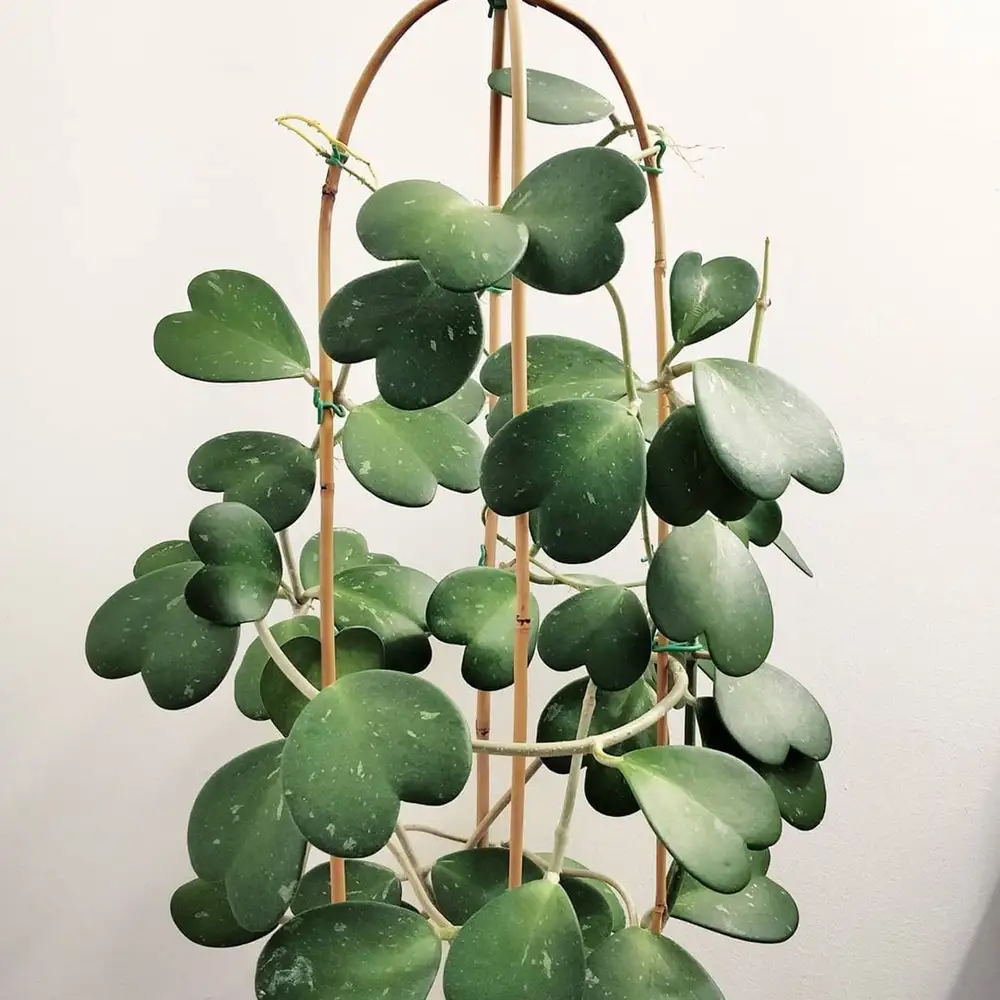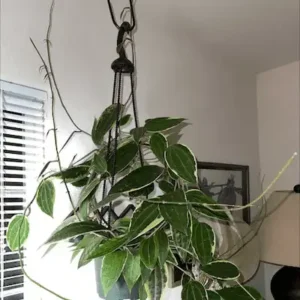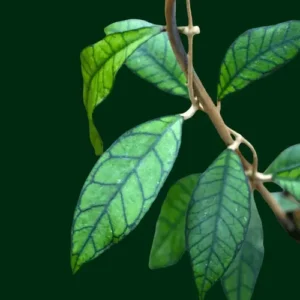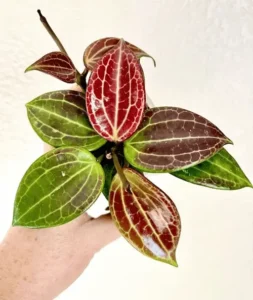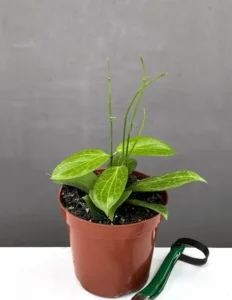Introduction
Hoya kerrii, commonly known as the sweetheart plant or lucky heart, is a beloved houseplant known for its heart-shaped leaves and low-maintenance care. Native to Southeast Asia, this trailing succulent is not only a visual delight but also a resilient choice for both novice and experienced plant enthusiasts. This article will cover the essential care requirements for Hoya kerrii, ensuring your plant thrives and becomes a focal point in your home.
A detailed Analysis of Care Requirements for Hoya Kerrii
Here is a detailed analysis of care requirements for Hoya Kerrii.
Light Requirements
Hoya kerrii thrives in bright, indirect light. While it can tolerate lower light conditions, the plant will grow more slowly and may not produce the stunning blooms it is known for. If you place your plant near a window, ensure it is filtered light, as direct sunlight can scorch its leaves. Ideally, a location with plenty of indirect sunlight for six to eight hours a day will promote healthy growth and vibrant foliage.
Watering Needs
One of the most important aspects of caring for Hoya kerrii is understanding its watering needs. This plant prefers to dry out between waterings due to its succulent nature. Overwatering is a common mistake that can lead to root rot, so it’s crucial to establish a consistent watering schedule.
Watering Tips
- Frequency: Water every 1-2 weeks, adjusting based on the season. In the winter, when the plant is dormant, reduce watering to once every 2-3 weeks.
- Soil Moisture: Check the top inch of soil; if it feels dry, it’s time to water. Ensure water drains through the bottom of the pot to prevent water accumulation.
- Drainage: Use a pot with drainage holes and a well-draining soil mix, such as a cactus or succulent mix, to promote healthy root growth.
Humidity and Temperature
Hoya kerrii prefers a warm and humid environment but is quite adaptable. Ideally, temperatures should range between 60°F to 80°F (15°C to 27°C). This plant can tolerate slightly cooler temperatures but should be protected from frost.
Humidity Requirements:
- Ideal Humidity: Aim for humidity levels around 40% to 60%. If your home is particularly dry, especially during winter, consider using a humidity tray or a humidifier.
- Leaf Care: Occasionally mist the leaves or wipe them with a damp cloth to remove dust, which can impede photosynthesis.
Fertilization
To encourage healthy growth and flowering, Hoya kerrii benefits from regular fertilization during the growing season (spring and summer).
Fertilization Guidelines:
- Type of Fertilizer: Use a balanced liquid fertilizer diluted to half strength. A fertilizer high in phosphorus can encourage blooming.
- Frequency: Fertilize every 4-6 weeks during the growing season and refrain from fertilizing in the fall and winter when the plant is dormant.
Pruning and Propagation
Pruning not only helps maintain the shape of your Hoya kerrii but also encourages bushier growth and more blooms.
Pruning Tips:
- When to Prune: Prune in early spring before the growing season starts. Remove any dead or yellowing leaves and leggy stems.
- How to Prune: Use clean, sharp scissors or pruning shears. Cut just above a leaf node to encourage new growth.
Hoya kerrii is also relatively easy to propagate, making it a great choice for plant enthusiasts looking to expand their collection or share with friends.
Propagation Steps:
- Cutting: Take a cutting of about 4-6 inches from a healthy stem, ensuring it has at least two leaves.
- Rooting: Place the cutting in water or directly in soil. If using water, change it every few days to prevent stagnation.
- Transplanting: Once roots have developed (usually within a few weeks), transplant the cutting into a pot with well-draining soil.
Pests and Diseases
Hoya kerrii is relatively pest-resistant, but it can occasionally be affected by common houseplant pests such as aphids, mealybugs, and spider mites.
Pest Management:
- Inspection: Regularly check the undersides of leaves for pests.
- Treatment: If you notice pests, isolate the Hoya (plant) and treat it with insecticidal soap or neem oil. For severe infestations, a gentle rinse in the shower can help remove pests.
Root rot is the primary disease to watch for, usually caused by overwatering. Ensure good drainage and monitor watering habits to prevent this issue.
Repotting
Hoya kerrii benefits from repotting every 2-3 years or when it outgrows its container. Signs that it’s time to repot include roots growing through the drainage holes or a noticeable slowdown in growth.
Repotting Tips:
- Timing: Early spring is the best time to repot, as the plant will be entering its active growing season.
- Pot Size: Choose a pot only one size larger than the current one to prevent overwatering and to encourage root development.
| FAQs How to care for the Hoya kerrii plant? One of the most important aspects of caring for Hoya kerrii is understanding its watering needs. Hoya kerrii prefers a warm and humid environment but is quite adaptable. Ideally, temperatures should range between 60°F to 80°F (15°C to 27°C). Aim for humidity levels around 40% to 60%. Hoya kerrii thrives in bright, indirect light. To encourage healthy growth and flowering, Hoya kerrii benefits from regular fertilization during the growing season (spring and summer). Pruning not only helps maintain the shape of your Hoya kerrii but also encourages bushier growth and more blooms. How much sun does Hoya kerrii need? Hoya kerrii thrives in bright, indirect light. While it can tolerate lower light conditions, the plant will grow more slowly and may not produce the stunning blooms it is known for. If you place your plant near a window, ensure it is filtered light, as direct sunlight can scorch its leaves. Can Hoya kerrii grow from a single leaf? No, hoya kerrii cannot grow from a single leaf. It needs some potion of stem with leaf stalk. For hoya kerrii’s cuttings grow more leaves. |
Conclusion
Hoya kerrii is a charming and relatively easy-to-care-for houseplant that can bring joy to any space. By providing the right light, water, humidity, and care, you can enjoy its lush heart-shaped leaves and potentially beautiful blooms for many years. With its low maintenance requirements and striking appearance, Hoya kerrii is indeed a plant that brings good luck and positive energy into your home. Whether you’re a seasoned gardener or a beginner, this delightful plant is sure to brighten your indoor garden.

